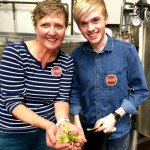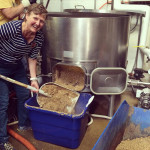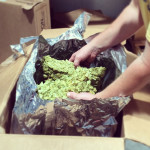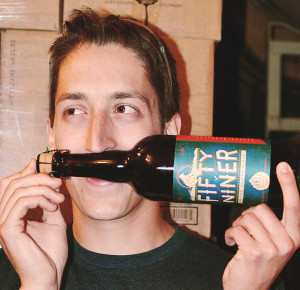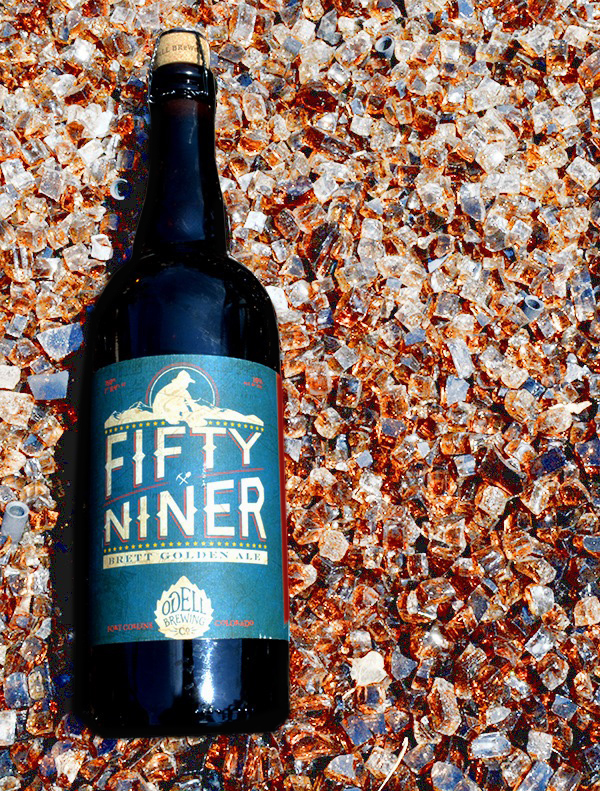Pilot Brew: Peel Out Banana Nut Brown
One of the perks of working for a brewery is getting to make beer. To be clear, I have no experience brewing and never thought it would be something that I’d ever have the opportunity to try. I worked as a teacher prior to becoming the marketing and communication coordinator for Odell Brewing Company earlier this summer. So when pilot system manager Brent Cordle sent out a brewing sign-up sheet, I put my name on the list without second thought. “Maybe I’ll brew in a few months,” I thought.
Then, about two weeks later, I was on the calendar. That meant coming up with ingredients. A plan. A name. Things I had no experience with as a teacher. Or had I?
In 2011, I was a part of the Toyota International Teacher Program—a two-week travel study in Costa Rica for teachers interested in sustainability. We spent time researching sustainable agriculture practices and planting trees; learning about global connectedness and the environment. One of the best parts was spending a few days at EARTH University, a non-profit university in Guacimo. While there, we learned about the fair-trade bananas that were harvested and sent to Whole Foods Markets in the U.S. EARTH University bananas are grown on the campus farm using innovative, environmentally-friendly practices and are Rainforest Alliance Certified and grown carbon neutral. It was a great learning experience.
Now for the second part of the equation: I am a huge fan of banana bread. My mom and I have been making it since I was young, and so I thought it fitting to make a banana bread beer with bananas that I knew had been harvested at EARTH University. Luckily, Brent stepped in to choose a style of beer—a nut brown ale that would add medium body to the brew. He chose the grains and decided to use our house yeast, and brew day was scheduled.
Our five-barrel system is pretty unique. As Brent pointed out, not many breweries have a system for creating small batches of beer. We can pump out around 10 kegs in two weeks, allowing us to constantly brew with our co-workers or collaborate with people in the community. Pilot brews are sometimes interesting, often experimental, and always a hit. So much so, in fact, that the tap room typically runs out of pilots in a week or so.
We started the day by adding hot water to the grist (or milled barley), creating our mash. It looked like a giant bowl of cereal and smelled sweet and grainy. That mash was then pumped into the second vessel (called a lauter tun), which created the wort. The wort was boiled for 90 minutes, during which time we added pelletized hops for a bit of bitterness and flavor. It smelled chocolate-y and delicious and made me really excited to try the finished product.
Once the wort was extracted from the spent grains, we had to shovel those out of the lauter tun to prepare for Lugene, a local farmer who feeds them to his happy cows. That was a little tougher than expected, but it felt good knowing that the grains would not be wasted.
We added yeast to our fermentor and, finally, the wort. The “beer” stayed in the fermentor until three days later when we added our last, most special ingredient.
We used 40 pounds of overly-ripe bananas, donated from Whole Foods Market in Fort Collins. Each banana even had the orange EARTH University sticker; a reminder that our beer was making a small difference in the sustainability world. I hauled them back to the brewery and created a banana puree, which could easily be added to the fermentor. Afterward, my husband and Brent helped steady me on a seemingly 100-foot ladder (not even close) so I could add the banana puree to the top of the tank. It was scary, but I wanted to make sure that I could take part in every aspect of the brewing process.
Ten days later, I was finally able to try the finished product. It tasted crisp and refreshing, with subtle hints of cocoa and banana that lingered afterward. I could not have asked for a better outcome. I aptly named the beer Peel Out, created a tap sticker and crossed my fingers when I heard that it would be available in the tap room the following week. Then I smiled.
“Whew,” I thought. “That was fun.”
Tracy Marcello is the marketing and communication coordinator for Odell Brewing Company. Her Peel Out Banana Nut Brown will be available in the tap room beginning Aug. 4.




